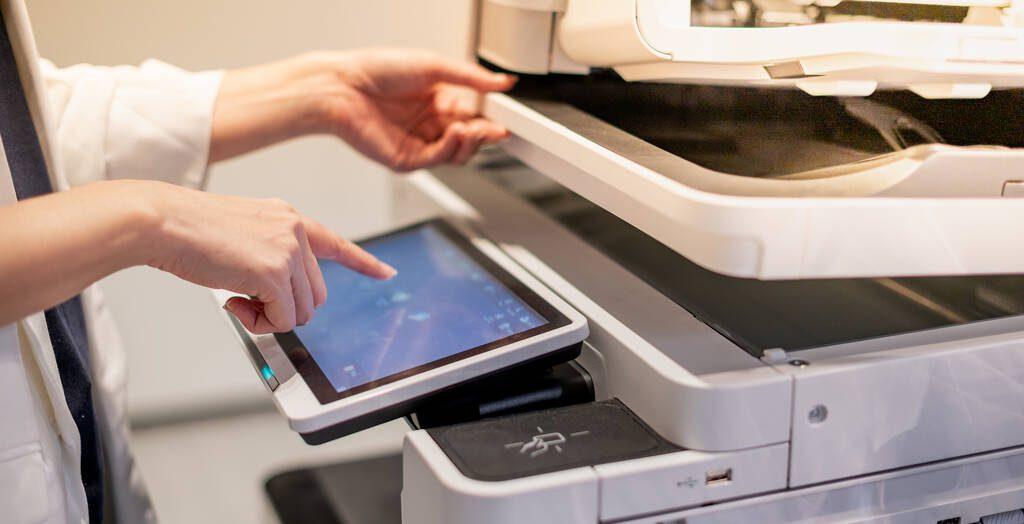
History of Photocopiers: How They Transformed Offices, Art & More
In today’s world of 3D printers, people can copy and share not only texts & pictures on paper but also physical objects. These devices have made prototyping easy & fast and even brought manufacturing closer to home. But before 3D printers revolutionised the world, there was a technology that made a remarkable impact by letting consumers duplicate one document after another: the photocopier. Today, let’s take a trip down memory lane and see how photocopiers have helped transform modern offices, the art sector and the everyday life of machine users.
Xerox 914: The First Commercial Photocopier
In 1959, Xerox released the first easy-to-use commercial photocopier called “914,” an ingenious product of 20 years of experimentation. Unlike its predecessors, Xerox 914 produced copies through a dry, clean and fast process. It had a rotating metal drum that created an electrostatic image of a document and transferred toner to a piece of paper. The copy would then be sealed in place by heat.
Xerox 914 was fast; it could crank out a copy in only around seven seconds. So then the era of photocopying began. Corporate users embraced the 914 machines and made billions of copies a year, transforming how information moved around that time.
In the pre-914 era, only a few higher-ups would receive an important letter. The original letter would circulate from office to office, along with a routing slip that shows who had read it and where it should go next. That process changed after the Xerox 914 arrived. Office departments began copying letters, memos and white papers they felt everyone should see. In a way, the photocopier made information more accessible not only to officials but also to the other members of the company.
How Photocopiers Changed Everyone’s Lives
The rise of copying also impacted everyday life. Workers would sneak their personal items on the machine, producing copies of their party invitations, tax returns & more. At that time, chain letters began to become popular, too. People wouldn’t only forward the letter but also send out 20 or more copies because they could!
Moreover, Xerox 914 users discovered they could create paper replicas of physical objects. They would place their hands & other objects on the copier glass. The police followed suit, too. Instead of manually typing and describing the contents of a suspect’s pockets during arrest, they would just dump the contents on the copier glass and hit the copy button. That made the arrest process quicker & easier.
Artists also found a way to use the photocopier creatively. For instance, Pati Hill became famous for using a photocopier in her artistic practice. She enjoyed showing the aesthetic quality of photocopied prints. Her famous works included a photocopied hair curler that looked like a spaceship & a photocopied inside of a straw hat that resembled an image of a descent into a volcano. The Xerox machines have also helped the rise of zines, which are self-published print work typically produced in small limited batches. More artists could put their work out, even without having a contract with a traditional book or magazine publisher.
Fast Forward: Today’s Role of Photocopiers
Today, photocopiers remain an essential machine in offices and other sectors. Apart from Xerox, other brands like Canon, Brother, Sharp, Kyocera & Toshiba manufacture photocopiers that meet the needs of modern users. Most of them even integrate the copying function into multifunction printers, making copying more cost-efficient.
Even with the rise of paperless processes, offices and other businesses continue to use copiers. After all, not all their clients are paper-free. Plus, many of today’s office photocopiers fully integrate with email, cloud and other mobile services. More importantly, hard copies are still important as document backups. When digital technology fails, hard copies can save the day.
The hard copy era isn’t over yet. Your business may still need the service of a good old photocopier, so it makes sense to keep a well-functioning copier in your office or shop. Plus, Printer Repair Centre is here to ensure your copier works well every time.
Contact Printer Repair Centre for Photocopier Repairs
At Printer Repair Centre, we specialise in more than printer repairs; we also provide top-quality commercial photocopier repairs or multifunctional device maintenance. Our team understands your office equipment is essential for your day-to-day operations. So we provide same-day repairs if you call before 9 AM. If your copier requires extensive service, our company will be happy to provide a free loan machine. That’s how we help keep your business running while our qualified technicians work on your copier.
Contact us for Kyocera, Canon or Xerox photocopier repairs in Sydney today.



